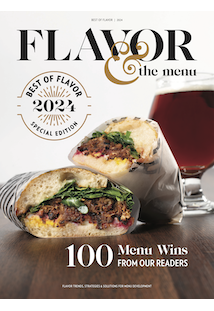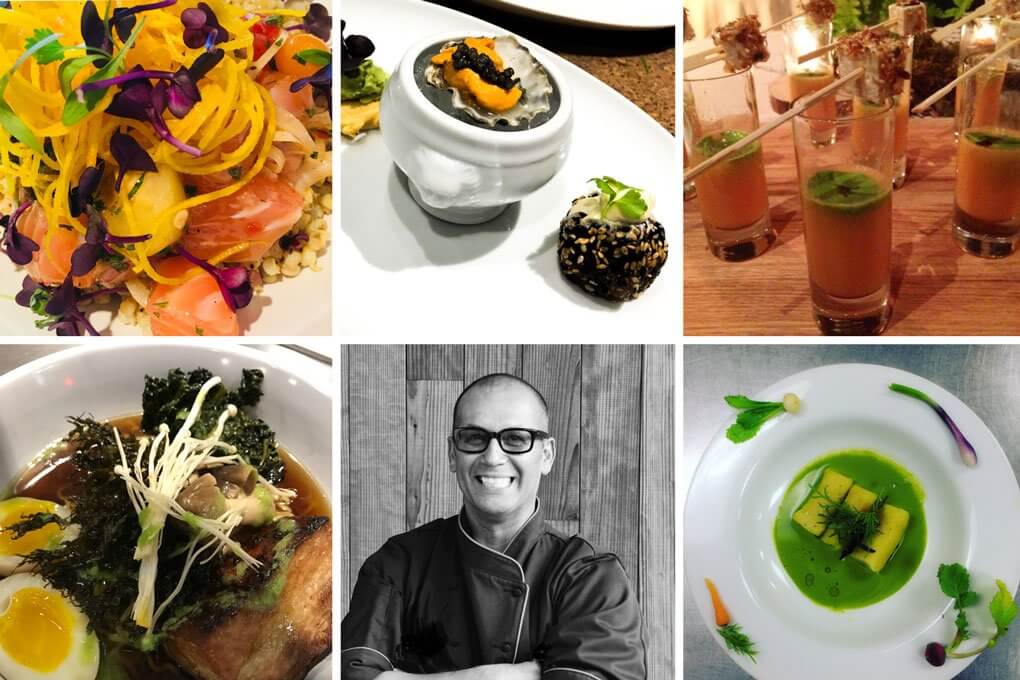Jay Perry is a culinary consultant based in Chandler, Ariz., helping food companies create brand and product recognition through menu ideation based around current flavor trends. He’s held various roles in a range of culinary settings, most recently as chef de cuisine at Oregon State University/Dining Services in Corvallis, Ore., responding to the flavor preferences of both Millennials and Gen Z. Perry shared with us his approach to flavor strategy, relying on both the power of sensory experience and the power of complexity in flavor building.
What are a few rules you live by when it comes to menu/flavor development?
Menu writing is like composing a song or symphony. You should never rush through it. I first have to think about harmony, flow, and the beginning, middle and end. It all makes for an experience. I always tell my chefs that it has to make sense. It has to have purpose and passion, and it has to be prepared for perfection.
The most important rule is flavor. No matter what direction I want to go with the dish or recipe, it has to leave you with a remembrance of how good it was—that’s what makes you want to go back to that place where you had that experience. Visual, scent and feel are all great experiences to have in food and are needed to complete a dish, but it is the flavor that takes you home and brings you back to that place. When building flavor, use layers and not a “food explosion.” Your tongue has a symphony of receptors that creates a sensation as it senses salty, sweet, sour, heat and umami.
What are some flavors/ingredients that you’re playing around with currently?
Freekeh: I love its inherent smokiness, plus it’s a superfood and has so much versatility on the menu. I’m a grains guy and really believe that whole grains are going to play a significant role in the future of food. It’s nice to see conversations and new menu development going on around grains.
Mushrooms: I just want to do so many things with them. Each variety has a unique flavor and application. Living in Oregon allowed me to go into any wooded area and find some of the greatest treasures growing in the wild. I’d love to create a menu that just showcases mushrooms.
What trends are you seeing in the foodservice industry that are interesting or inspiring to your work?
The fact that chefs are bringing it back to simple, fresh ingredients by maximizing or extracting their true, rich flavor by using different cooking methods – like taking a carrot or mushroom and getting the richest and truest flavor from it and using it in various ways in the dish.
Describe a memorable or unique menu build.
I was asked to cater a charity event my sister was hosting. She wanted me to create a vegan menu of small bites. I love a good Caprese salad, and the way the tomato, cheese, basil and balsamic all work together, but I wanted to do it with a twist: I asked myself, “What if I recreated that in a drink experience as a shot?” I took the best tomatoes and made a slow strain of concentrated water. I then made a refined basil oil. I used a 25-year-old balsamic to create pearls using some molecular methods. Then I made a vegan “mozzarella” and added some umami to it by creating mushroom flakes. Each component had its own viscosity and layered in the glass: The basil oil floated on top of the tomato water and the balsamic pearls hovered at the bottom. As you drank it, the tomato flowed first while the pearls made their way up the glass and into your mouth, immediately followed by the oil. You then finished with a small cube of vegan mozzarella dipped in the dried mushroom flakes to create a wonderful and unique flavor experience. The guests went nuts over it – I never received more wows on a creation.
What has been a source of inspiration for you throughout your career?
One of the biggest impacts in my life that gave me the desire to be a chef was working at the Westin Century Plaza Hotel [in Los Angeles] and witnessing first-hand the prestige, respect and artistry of what the executive chef was able to do. I told my dad that one day I was going to be like that guy. I was so blessed to have other chefs from Italy and France take me under their wings to teach me about Italian and French cooking, which inspired me to study the cuisines and cultures of those countries. Finally, it was working at Oregon State University that really gave a bigger and more educational platform that challenged me to grow and develop into a more refined chef with the opportunity to engage and impact a new generation. OSU’s Housing & Dining Services believed in me and invested resources to allow me to have a huge influence on our program, building it into something bigger and better. They recognized my passion for food and to never compromise on what I love to do.
What’s your go-to after-shift meal or snack?
Street tacos. I can eat a gang of those when done right. Meat, tortilla, cilantro, pickled onion, lime, Cotija and heat—simple, clean and loaded with flavor.
Go-to cocktail?
Champagne. It’s so simple yet so complex in method, flavor and experience. It holds its own and goes well with everything.
Instagram: @heyjperry










